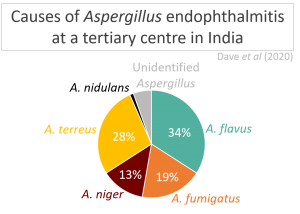Submitted by Aspergillus Administrator on 21 December 2011
 |
| Sir Alexander Fleming receiving the Nobel Prize in 1945 |
The fungus Sir Alexander Fleming isolated (his famous ‘lucky’ observation) in 1928 which was the first step in the process that brought us antibiotics, and for which Fleming won the Nobel Prize is in the news once again. That fungus was intensively studied 80 years ago and identified as Penicillium chrysogenum and then put into storage.
 |
| The Imperial College team |
Modern techniques for the identification of fungi are far superior to those available in the 1930’s & 40’s and a research group at his original place of work St Mary’s College – now part of Imperial College, London have shown that those that identified Fleming’s fungus got it slightly wrong but in the process have revealed to us a far more complex picture of this fungal species that we realised existed.
It turns out that Flemings isolate is not P. chrysogenum but is a very closely related species which has yet to be named. The species P. chrysogenum is in fact a group of four closely related species.
This discovery highlights that fungi are extremely diverse micro-organisms – as soon as you think you have one categorised several more subgroups are found. It also highlights the importance of understanding this diversity as after Fleming’s initial observation many thousands of isolated of P.chrysogenum were analysed for their ability to produce penicillin and only after a lot of work was a suitable isolate found to work on an industrial scale. If they had known then what we know now perhaps that would have been more easily achieved.
For the future our new understanding of fungal biodiversity (including that of Aspergillus) may well lead to new drugs and products.
News archives
-
Title
Date


